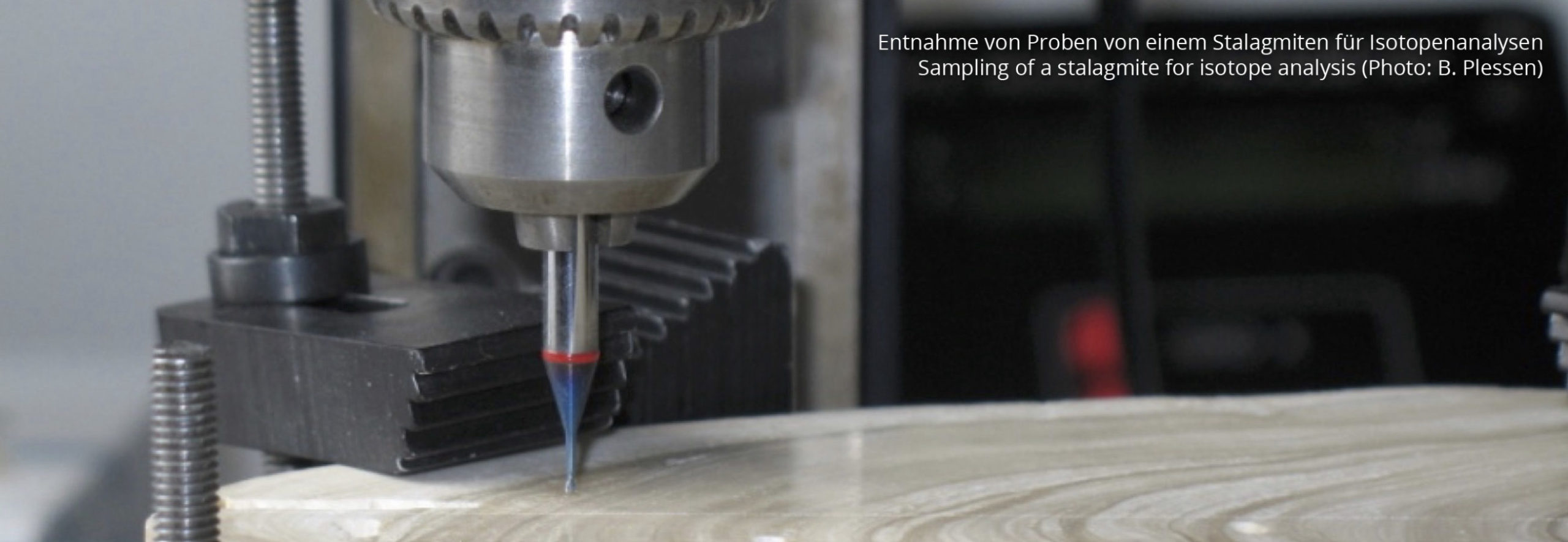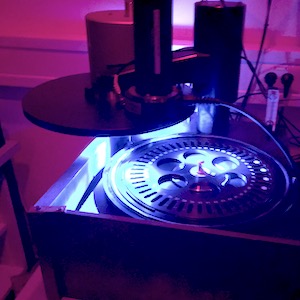Publications
2024
Zhang, Junjie; Klose, Jennifer; Scholz, Denis; Marwan, Norbert; Breitenbach, Sebastian F. M.; Katzschmann, Lutz; Kraemer, Dennis; Tsukamoto, Sumiko
Isothermal thermoluminescence dating of speleothem growth – A case study from Bleßberg cave 2, Journal Article
In: Quaternary Geochronology, vol. 85, pp. 101628, 2024.
Abstract | Links | BibTeX | Tags: bb2-1, chronology, dating, jgu, liag, northumbria, pik, stalagmite, tl dating
@article{zhang2024,
title = {Isothermal thermoluminescence dating of speleothem growth – A case study from Bleßberg cave 2,},
author = {Junjie Zhang and Jennifer Klose and Denis Scholz and Norbert Marwan and Sebastian F. M. Breitenbach and Lutz Katzschmann and Dennis Kraemer and Sumiko Tsukamoto},
doi = {10.1016/j.quageo.2024.101628},
year = {2024},
date = {2024-09-21},
urldate = {2024-09-21},
journal = {Quaternary Geochronology},
volume = {85},
pages = {101628},
abstract = {Speleothems are a key archive of past climatic and environmental changes. 230Th/U dating is the most commonly used method to determine speleothem ages. However, incorporation of non-radiogenic thorium may hamper 230Th/U dating, and samples older than 600 ka also remain out-of-reach. Calcite exhibits a thermoluminescence (TL) signal at 280 °C with a high characteristic saturation dose, and provides significant potential to date carbonate samples over several million years. Hitherto, the application of TL dating for calcite has mainly been hindered by two factors: 1) a spurious TL signal occurring in the high temperature range, and 2) non-uniform dose rate due to U-series disequilibrium. Here we test an isothermal TL (ITL) dating method on a speleothem sample from Bleßberg cave 2, Germany. We show that the ITL signal measured at 240 °C can completely remove the 280 °C TL peak with a negligible TL contribution from the higher temperature range, thus reducing the influence from the spurious signal. The time-dependent dose rate variation can be simulated using the initial radioactivity of 238U, 234U, 230Th and their decay constants. We use the 230Th/U dating method to provide precise and accurate radiometric ages documenting that the speleothem grew between 425.5 ± 5.4 and 320.5 ± 9.7 ka. The ITL ages (421 ± 23 to 311 ± 23 ka) of four subsamples from the speleothem are consistent with the 230Th/U ages at isochronous sampling positions, showing the general reliability of the ITL dating method. ITL dating provides a pathway to construct chronologies for palaeoclimate reconstructions for speleothems beyond the range of the 230Th/U-method and for samples that are unsuitable for U-series dating methods.},
keywords = {bb2-1, chronology, dating, jgu, liag, northumbria, pik, stalagmite, tl dating},
pubstate = {published},
tppubtype = {article}
}
2023
Zhang, J.; Klose, J.; Sierralta, M.; Tsukamoto, S.; Scholz, D.; Marwan, N.; Breitenbach, S.
Isothermal thermoluminescence (ITL) dating of a speleothem from Bleßberg Cave Presentation
29.06.2023, (17th International Luminescence and Electron Spin Resonance Dating conference (LED2023), Copenhagen (Denmark)).
Abstract | BibTeX | Tags: bb2-1, dating, liag, stalagmite, tl dating
@misc{zhang2023,
title = {Isothermal thermoluminescence (ITL) dating of a speleothem from Bleßberg Cave},
author = {J. Zhang and J. Klose and M. Sierralta and S. Tsukamoto and D. Scholz and N. Marwan and S. Breitenbach},
editor = {17th International Luminescence and Electron Spin Resonance Dating conference (LED2023), Copenhagen (Denmark)},
year = {2023},
date = {2023-06-29},
urldate = {2023-06-29},
abstract = {The calcite thermoluminescence (TL) signal (280 °C peak) saturates at much higher doses (saturation dose up to 5000 Gy) compared to quartz and feldspar, which shows great potential to extend the dating limit. However, spurious TL signal occurred at the high temperature range hindered its application. The conventional multiple-aliquot additive-dose (MAAD) protocol used for TL dating applies extrapolation for equivalent dose (De) estimation, which also has large error. Isothermal TL (ITL) dating with the single-aliquot regenerative-dose (SAR) protocol might be a promising way as it reduces the influence of the spurious TL signal, and it applies interpolation to obtain the De. However, this protocol has not been tested on samples with independent age control.
This study tests the ITL SAR dating protocol on a speleothem sample from Bleßberg cave, which has been accurately dated with 230Th/U (ca. 320–425 ka). ITL measurement at 235 °C for 200 °C can remove the 280 °C TL peak completely without TL contribution from higher temperature range. ITL De shows a plateau when the ITL temperature varies between 230 °C and 240 °C. Peak shifting and isothermal annealing tests indicate the 280 °C TL peak has a lifetime of tens of millions years at 10 °C, which is stable enough for the age range of this speleothem sample. The accurate alpha efficiency (α-value) and the U, Th distribution within the sample are measured to estimate the dose rate. The dose rate variation with time due to U-series disequilibrium is corrected for. The ITL ages are compared with the 230Th/U ages to evaluate the performance of the ITL dating protocol.},
note = {17th International Luminescence and Electron Spin Resonance Dating conference (LED2023), Copenhagen (Denmark)},
keywords = {bb2-1, dating, liag, stalagmite, tl dating},
pubstate = {published},
tppubtype = {presentation}
}
This study tests the ITL SAR dating protocol on a speleothem sample from Bleßberg cave, which has been accurately dated with 230Th/U (ca. 320–425 ka). ITL measurement at 235 °C for 200 °C can remove the 280 °C TL peak completely without TL contribution from higher temperature range. ITL De shows a plateau when the ITL temperature varies between 230 °C and 240 °C. Peak shifting and isothermal annealing tests indicate the 280 °C TL peak has a lifetime of tens of millions years at 10 °C, which is stable enough for the age range of this speleothem sample. The accurate alpha efficiency (α-value) and the U, Th distribution within the sample are measured to estimate the dose rate. The dose rate variation with time due to U-series disequilibrium is corrected for. The ITL ages are compared with the 230Th/U ages to evaluate the performance of the ITL dating protocol.

